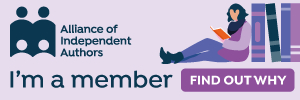You’d think Nordic Noir was the only genre that interests us Scandinavians. Particularly if you look at the most popular TV series, such as The Killing, Wallander, or The Bridge. Or if you read authors such as Jo Nesbo, Stieg Larsson, Yrsa Sigurdardottir or Kati Hiekkapelto. All these authors produce works that include gruesome killings, serial murderers and generally portray the bright blood on snow that has become such a pull to readers and viewers all over the world.
Murder Is a National Sport
Nordic Noir became popular in Scandinavia already in the 1960s, in the era of Maj Sjöwall and Per Wahlöö, the authors of the popular Martin Beck series, but it was really Stieg Larsson and his Millennium series that brought the genre into international attention.

It’s Not All Blood and Gore in The Nordic Countries
You could say that everything is a bit darker in the Nordic countries. I’ve been told that even my own Nordic Heart romance series has some of this darker moodiness to it.
But, but …
There is so much more to the Scandinavian art world than Nordic Noir. There are family dramas, comedy, and even dystopian fairy tales where no bodies are found under suspension bridges.
Nordic Comedy

Nordic Family Drama

The Moomins should be required reading for anyone seeking to enter western politics
There are several other, new Nordic stories on the human condition such as The 100-Year-Old Man Who Climbed Out of The Window and Disappeared, or A Man Called Ove, as well as stories of family rifts such as The Legacy. Love, loss, melancholy are in abundance here, but, notably, there’s no blood or gore.
Nordic Romance, Dystopian Fairy Tales, and Political Drama

In the other Nordic countries too, romance is well represented. Even Tove Jansson’s last fiction title, Fair Play is a love story of sorts, and Ibsen’s plays (as well as Strindberg’s) are all about love. Looking at modern works, the film, The Royal Affair, has a deeply romantic theme. It tells the tragic tale of an 18th-century Danish queen’s love affair with her physicist. A newer film, Tom of Finland, on the other hand, brings to light the life and work of artist Touko Valio Laaksonen (aka Tom of Finland), one of the most influential and celebrated figures of twentieth-century gay culture.
The latest Nordic fiction title I recommend on this blog was a collection of modern dystopian fairy tales, The Last Train to Helsingor, while the political TV drama Borgen, has been seen by millions of people.
AS you can see, the examples of genres, other than Nordic Noir, coming out of these countries are too many to site here.
So why does it seem to be that when you search for Nordic fiction or drama, all you find is Nordic Noir?
It’s all about marketing

It seems prestigious literary prizes have nothing on being placed on a bookshops shelf between Stieg Larsson and Jo Nesbo.
All smoke and mirrors?
It is a fact universally acknowledged, of course, that literary fiction doesn’t sell on the English-language market, and translated fiction even less so. It, therefore, makes sense for publishers, producers, and authors to use the huge popularity of the Nordic Noir genre to get some much-needed visibility to all art coming from the Nordic countries. It’s a no-brainer and I’m probably being a stickler for details when I’m annoyed that every book, film or TV series coming out of the Nordic countries is labeled with the title ‘Noir’.
What do you think? Do you mind how books are classified? In this age of digital marketing where keywords and categories make such a difference to a product’s visibility, is it OK to effectively mis-sell a product?
Comment below to start the conversation going!
Want to see more posts like this? Sign up to my blog feed here.







